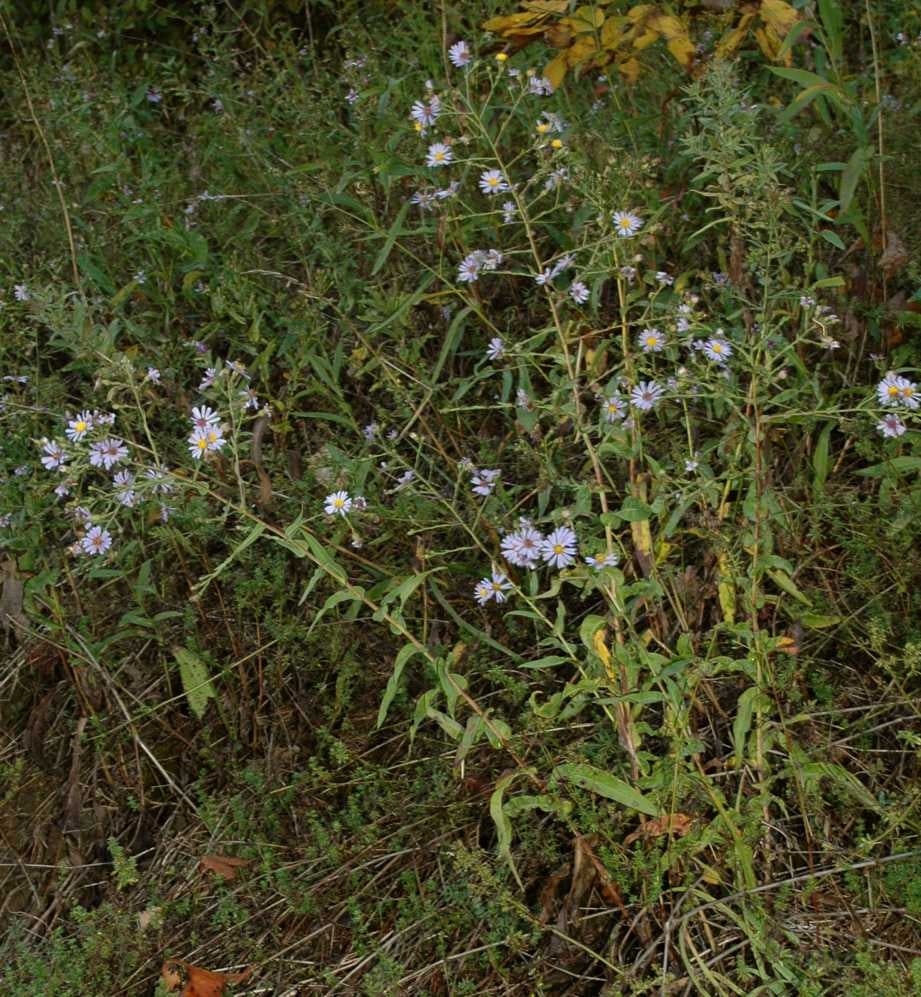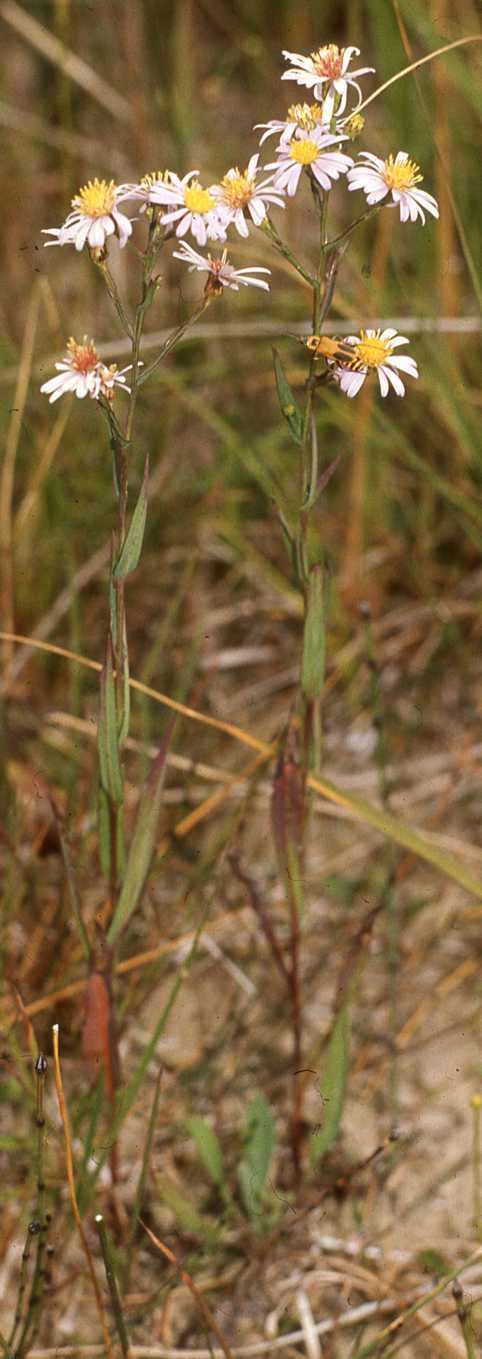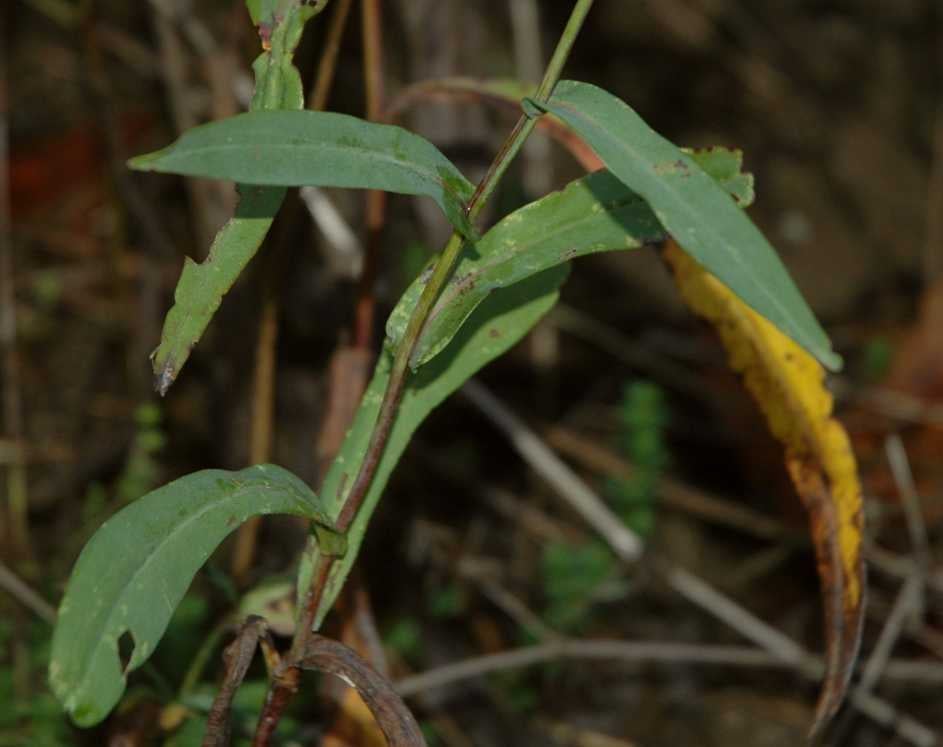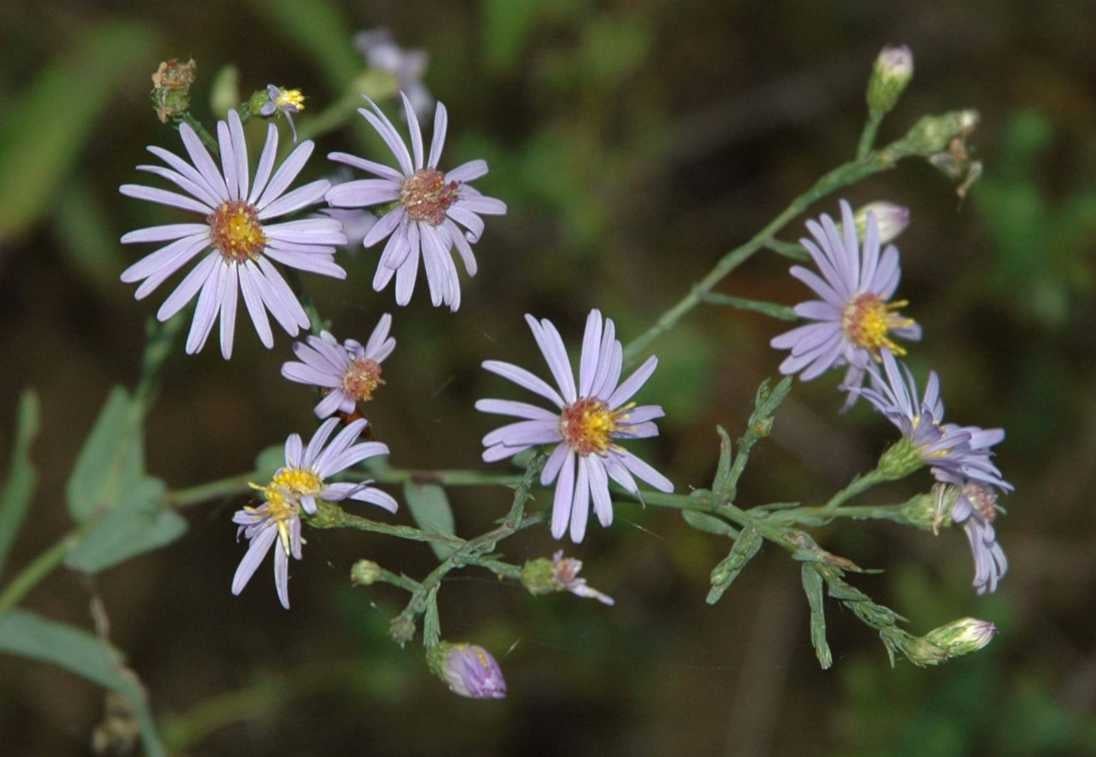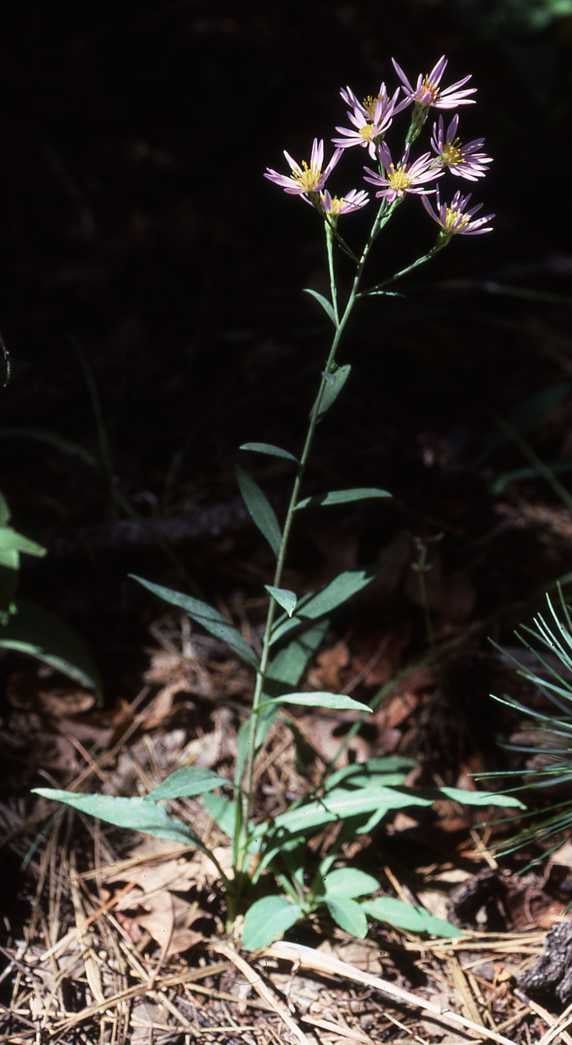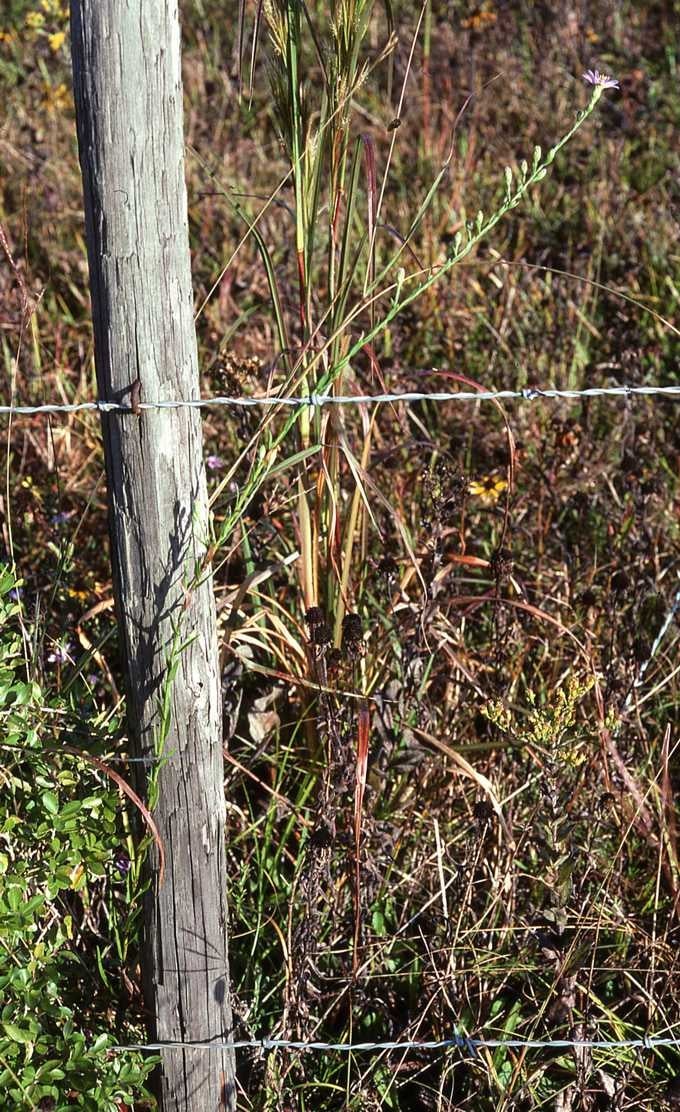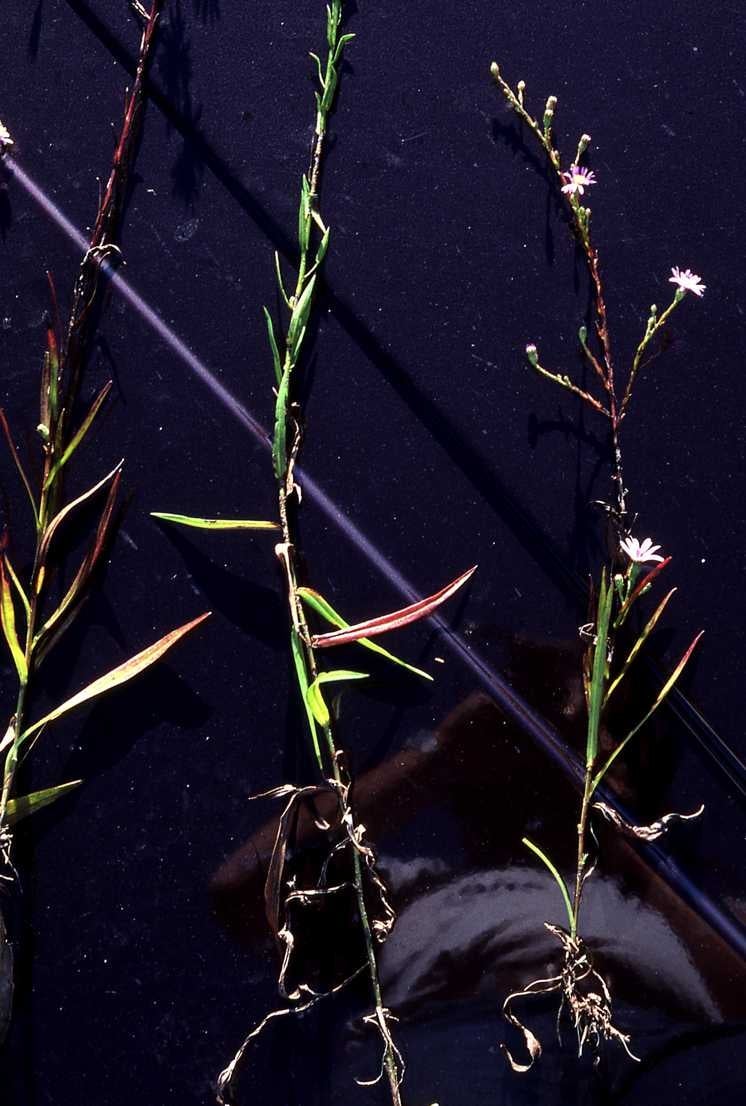Smooth Aster, aster lisse
Symphyotrichum laeve (L.) Á. Löve & D. Löve is widely distributed heterophyllous species across much of Canada and the US (Brouillet et al. 2006; FNA). The species is introduced in Mexico and in Europe where it occurs in typical form and in forms likely originating from interspecific hybridization in gardens. Leaves are glaucous, thick, firm, ± fleshy, margins crenate-serrate, serrulate or entire, scabridulous, apices mucronulate; basal leaves usually withering by flowering or sometimes persistent (var. purpuratum), petiolate (petioles ± winged, bases dilated, sheathing), blades spatulate or oblong to ovate or lanceolate-ovate, bases attenuate or cuneate to rounded; mid stem leaves petiolate or subsessile or sessile (petioles narrowly to broadly winged, clasping), blades ovate or oblong-ovate to lanceolate or linear-lanceolate, progressively reduced distally (abruptly so in arrays), bases auriculate and ± clasping to rounded, margins entire; rays usually pale to dark blue or purple, seldom white. The species is hexaploid (2n=48) throughout its range.
Four varieties are recognized here (FNA links include synonyms, e.g. Symphyotrichum attenuatum).
Leaves lanceolate to ovate, conspicuously auriculate-clasping, lengths less than 5 times widths
Phyllaries strongly unequal, green apical zones diamond-shaped; northeastern onto prairies race .... Sy. laeve var. laeve (FNA)
Phyllaries unequal, green apical zones lanceolate; western prairie and mountain race .... Sy. laeve var. geyeri (FNA)
Leaves linear-lanceolate to linear, slightly auriculate-clasping, lengths often 5 times widths
Basal leaves withering by flowering, cauline linear-lanceolate eastern race .... Sy. laeve var. concinnum (FNA)
Leaves mostly basal and proximal at flowering, mostly linear southeastern race .... Sy. laeve var. purpuratum (FNA)
Brouillet, L., J.C. Semple, G.A. Allen, K. Chambers and S. Sundburg. 2006. Symphyotrichum Nees. pp. 465-539. In Flora North America Editorial Committee, eds. Flora of North America. Vol. 20. Asteraceae, Part 2. Astereae and Senecioneae. Oxford University Press, New York.
Last revised 13 May 2025 by J.C. Semple
© 2025 J.C. Semple, including all photographs unless otherwise indicated
1-10. Symphyotrichum laeve. 1-5. var. laeve. 1-2. Habits, Waterloo, Co., Ontario and Sauble Beach, Ontario. 3. Leaves. 4. Heads. 5. Head, cultivated Waterloo, Ontario. 6. White rays, Semple 3092, Niagara R.M., Ontario. 7-9 var. geyeri. 7. Habit, Semple & Heard 8180 (var. guadalupensis morph), Guadalupe Mts., Texas. 8-10. var. purpuratum, Semple & Suripto 10055 (A. attenuatus morph); shoot by fence, shoots against dark background, heads.










